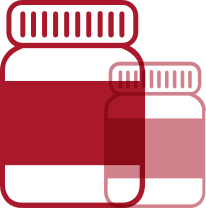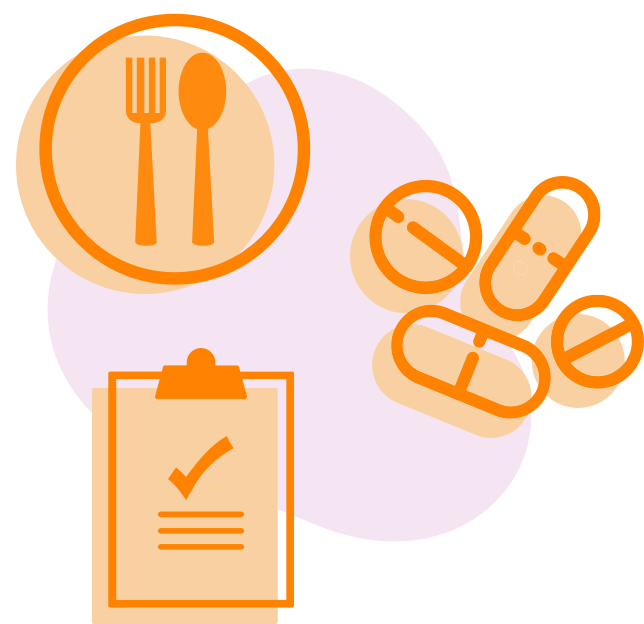
Treating and managing urea cycle disorders
Living with a urea cycle disorder (UCD) can be difficult. If you or a loved one has a UCD, you know firsthand the day-to-day struggles of managing the disorder, the pressure to stick to specific diet and lifestyle changes, the stress that comes with trying to maintain normal levels of ammonia, and the constant fear of what will happen if those ammonia levels increase. Although it can be overwhelming and emotionally draining, there are tools that can help. Treatments to help prevent harmful buildup of ammonia and the resulting consequences include:

Sticking to a low-
protein diet

Medicines that manage ammonia levels

Amino acid supplements, such as L-arginine or L-citrulline
It is important to work with a healthcare team to decide what treatment approach is right for you or your loved one. Your team may include any or all of the following types of healthcare professionals:
Sources
- Gerstein MT, Markus AR, Gianattasio KZ, et al. Choosing between medical management and liver transplant in urea cycle disorders: a conceptual framework for parental treatment decision-making in rare disease. J Inherit Metab Dis. 2020;43(3):438-458.
- Häberle J, Burlina A, Chakrapani A, et al. Suggested guidelines for the diagnosis and management of urea cycle disorders: first revision. J Inherit Metab Dis. 2019;42(6):1192-1230.
- Häberle J, Boddaert N, Burlina A, et al. Suggested guidelines for the diagnosis and management of urea cycle disorders. Orphanet J Rare Dis. 2012;7:32.
- Batshaw ML, Tuchman M, Summar M, Seminara J, Members of the Urea Cycle Disorders Consortium. A longitudinal study of urea cycle disorders. Mol Genet Metab. 2014;113(1-2):127-130.
- BUPHENYL® (sodium phenylbutyrate). Prescribing information. Lake Forest, IL: Horizon Therapeutics.
- RAVICTI® (glycerol phenylbutyrate) oral liquid. Prescribing information. Deerfield, IL: Horizon Therapeutics.
- AMMUNOL® (sodium phenylacetate and sodium benzoate). Prescribing information. Scottsdale, AZ: Ucyclyd Pharma, Inc.
- Enns GM, Porter MH, Francis-Sedlak M, Burdett A, Vockley J. Perspectives on urea cycle disorder management: results of a clinician survey. Mol Genet Metab. 2019;128(1-2):102-108.
- Gropman AL, Prust M, Breeden A, Fricke S, VanMeter J. Urea cycle defects and hyperammonemia: effects on functional imaging. Metab Brain Dis. 2013;28(2):269-275.
- Gupta S, Fenves AZ, Hootkins R. The role of RRT in hyperammonemic patients. Clin J Am Soc Nephrol. 2016;11(10):1872-1878.









